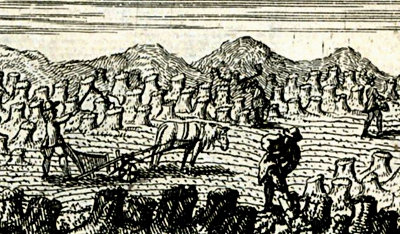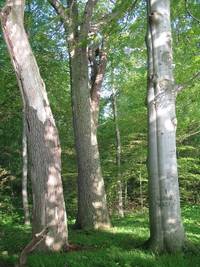The history of German forestry
 |
In the Middle Ages, when large areas of forest land were first cleared for settlement or used for agricultural purposes. Since then, forests have been changed and partly degraded by littering, tanning and intensive use for livestock fodder and as an energy source. Around 1700, even the mining industry was threatened in Saxony. The mines had not been exhausted of their ores, but the mining industry and smelting of ores had consumed whole forests. In the vicinity of places of mining activity the old growth forests had disappeared completely. Trees had been cut for decades without restoring the forests.
The mining administrator Hans Carl von Carlowitz was the first one to comprehensively formulate the concept of sustainability in forestry. His famous treatise „Sylvicultura Oeconomica, or a guide to the cultivation of native trees” is a compilation of the knowledge about forest management at the time. It was published exactly 300 years ago, in the year 1713, in Leipzig. Carlowitz combines descriptions of useful tree varieties with practical suggestions for a long-term solution to the timber shortage. He calls for a cautious use of wood, which is “as important as our daily bread”, so that a balance between planting, growing and harvesting of trees is achieved and its benefits can be enjoyed “continuously and perpetually. Where it has been removed entirely, we apply our best efforts to ensure that new growth will replace it.”
Historic developments demonstrating early reactions to economic, social and environmental demands on forests gave rise to another noteworthy movement in the form of close-to-nature forest management. Long before modern science evolved to support many of their original hypotheses, some foresters in the early 19th century advocated developing both ecologically and economically valuable forests by making use of natural processes and avoiding clearcutting and bare forest soils. Much of this early practical experience paved the way for later forestry developments, including an increasing proportion of structurally diverse mixed stands, long regenerations periods and natural rejuvenation methods. Many valuable old forests in Germany – both in terms of timber and biological diversity – result from these intitiatives. In variable “plenter forests”, trees of different age classes stand side by side and regeneration takes place on a more or less continuous basis. Selective cutting or group selection cutting allows for natural regeneration to develop or existing regeneration to be used in the spaces opened up by cutting. This method of forest management by individual tree species and multi-storeyed forest structure has had a stimulating effect on many other silvicultural methods over many decades.
Sources:
www.bmelv.de
Ulrich Grober: Sustainability – a cultural history
Matthias Schwörer in "Forests for People"







